Comments / Questions (83)
![]() Nadine wrote:
Nadine wrote:
J ai tricoté 1 fois M2 M3 et M4. Je fais la taille L.Donc après M4 je me retrouve avec 63 mailles. A 10cm de hauteur totale il faut augmenter4 fois tous les5 cm soit 8 mailles au total. Ce qui me donne 63+8=71 mailles alors que vous indiquez 99 mailles. Est ce que je dois augmenter des mailles après M4? Comment je dois continuer après M4 et sur quelles nombres de mailles? Je suis bloquée
20.07.2025 - 19:59DROPS Design answered:
Bonjour Nadine, la taille L - 91 mailles au debut. Vous tricotez M2 jusqu'a 29-30-31-32-33 cm de hauteur totale. Augmentations sur les cotes: 4x2 mailles=8. 91+8=99. A partir des emmanchures vous suivez M3. Bon tricot!
21.07.2025 - 11:13
![]() NADINE wrote:
NADINE wrote:
Bonjour Après les 4 rangs de M2 j ai bien 91 mailles. Comment dois je faire le 1er rang de M3 et combien de mailles je dois avoir à la fin de ce rang? Je n y comprends rien Merci de votre réponse
20.07.2025 - 17:05DROPS Design answered:
Bonjour Nadine, j'ai deja explique cela dans ma reponse precedente. Bon tricot!
21.07.2025 - 11:14
![]() Anna wrote:
Anna wrote:
Czy schemat A2 powtarzać tylko raz i zaraz po nim A3 i A4 czy cały czas robić A1 ? Trochę niejasno jest wytłumaczone.
16.07.2025 - 21:08DROPS Design answered:
Witaj Anno, schemat M.1 dotyczy kolorów. Jednocześnie przerabiasz ścieg fantazyjny, czyli najpierw M2, później M3 i 6 rzędów schematu M4, a następnie powtarzasz tylko 4 ostatnie rzędy schematu M4 (nie ma już zamykania oczek). Pozdrawiamy!
16.07.2025 - 22:36
![]() LISBETH SYNØVE TEIEN wrote:
LISBETH SYNØVE TEIEN wrote:
Skal starte med M3 og etter det jeg forstår skal jeg felle en maske i begynnelsen og 1 maske midt på. Skal jeg strikke 3 masker sammen ved "fellingen" for å få rett antall masker å fortsette med? Syntes dette er vanskelig å forstå. Tilsvarende blir det vel i fortsettelsen og der står det vel at det syrikkes 3 masker sammen i stedet for 2, det er vel på pinne 3 og tilsvarende i M4 eller?? Håper på bistand/svar
25.05.2025 - 16:41DROPS Design answered:
Hej Lisbeth, når du starter med M.3 efter ærmegabet, kan du se at i første del af rapporten, strikker du 2 masker sammen 4 gange, men har kun 2 omslag på første pind, her får du automatisk 2 masker mindre for hver gang du strikker hele rapporten i bredden. Når du kommer op til 3.pind strikker du 3 ret sammen som vi beskriver nederst i opskriften :)
27.05.2025 - 14:05
![]() Mesnier wrote:
Mesnier wrote:
Faut il faire M3 et M4 au dos ? Merci
16.05.2025 - 19:05DROPS Design answered:
Bonjour Mme Mesnier, tout à fait, le point fantaisie se tricote de la même façon sur le dos que sur le devant. Bon tricot!
19.05.2025 - 07:13
![]() Mesnier wrote:
Mesnier wrote:
Toujours moi ... après les bonnes explications j’ai réussi. Merci Maintenant concernant les bretelles, 8 cm de hauteur avec les 4 mailles sont très très loin d’être suffisant , ! ! Il en faudrait le double Merci pour votre réponse
14.05.2025 - 21:16DROPS Design answered:
Bonjour Mme Mesnier, vous avez rabattu les mailles de l'encolure 2 rangs après 8 cm d'emmanchures, la bordure point mousse va être ensuite tricotée séparément sur 8 cm pour correspondre à cette même hauteur, vous tricotez ensuite les 8 mailles (les 4 m en attente + les 4 m de la bordure point mousse) pendant 12 cm pour la bretelle. Autrement dit, les 8 cm point mousse doit correspondre à la hauteur tricotée au point fantaisie. Bon tricot!
15.05.2025 - 09:53
![]() Mesnier wrote:
Mesnier wrote:
Ces explications sont différentes de celles du 8 mai. Je vais essayer..merci
12.05.2025 - 13:18
![]() Mesnier wrote:
Mesnier wrote:
Non je n’y arrive pas du tout. Si je fais comme votre explication il me reste 60 mailles à la fin du rang et non 54 mailles et les vagues (où il y a les jetés) ne se trouvent pas au bon endroit..elles sont décalées. Voulez-vous regarder si vous n’avez pas oublié quelque chose...et ce signe × m’intrigue comme je vous l’expliquait auparavant. Ça veut certainement dire quelque chose ! ! ! Y a t’il une erreur de votre part ? MERCI
12.05.2025 - 09:27DROPS Design answered:
Bonjour Mme Mesnier, tricotez ainsi les 22 mailles du diagramme *3 m ens à l'end, 1 m end, 1 jeté, 1 m end, 1 jeté, 1 m end, 3m ens à l'end (= il reste 7 m sur les 9 m du rang précédent), puis tricotez (2 m ens à l'end) x2, puis (1 jeté, 1 m end) x3, puis 1 jeté, et (2 m ens à l'end) x 2 (= il vous reste 11 m)*, répétez de *à* (soit 7 + 11) = il reste 18 m dans chaque diagramme à répéter en largeur, soit 3x18= 54 mailles. Mettez un marqueur entre chaque partie à répéter de *à* pour bien vérifier votre nombre de m , avant ce rang vous devez avoir *9 m (= 1er motif) + 11 m (2ème motif)* x 3 soit 60 mailles. En espérant que ceci puisse vous débloquer. Bon tricot!
12.05.2025 - 11:03
![]() Mesnier wrote:
Mesnier wrote:
Dans votre dernière réponse, vous mettez x. Dans (2 m ens. à l’end) x (1 jeté, 1 m end)....... que veux dire x ? Et à Elizabeth Maidment. quelque part vous mettez : 2 ens 2 ens 2 ens et pas dans votre réponse pour moi ??
10.05.2025 - 12:21DROPS Design answered:
Bonjour Mme Mesnier, il manquait le "x2" désolée, juste une faute de frappe. Bon tricot!
12.05.2025 - 07:50
![]() Mesnier wrote:
Mesnier wrote:
J’ai l’impression que plusieurs personnes demandent ces mêmes questions pour ce rang et que vous ne répondez pas toujours là même chose... Sinon je ne termine pas mon ouvrage ! ! ,
09.05.2025 - 23:59DROPS Design answered:
Dites nous si les réponses précédentes ont pu vous aider; en tricotant le 3ème rang de M.3 comme indiqué, vous diminuerez en passant de 22 mailles pour chaque diagramme en largeur (soit 66 mailles sur l'aiguille avant ce rang) à 18 mailles pour chaque diagramme en largeur (soit 54 mailles sur l'aiguille après ce rang). N'hésitez pas à mettre des marqueurs entre chaque motif à répéter si besoin. Bon tricot!
12.05.2025 - 07:34
Cool Vibes |
|||||||||||||||||||||||||||||||
|
|
|||||||||||||||||||||||||||||||
DROPS Top with a striped wave pattern.
DROPS 81-9 |
|||||||||||||||||||||||||||||||
|
Tension: 22 sts x 34 rows in pattern = 10 x 10 cm. Stripe pattern: See chart. This chart is for COLOR only and follows the chart for Patterns 2, 3 and 4 for STITCH PATTERN. Wave pattern: See chart for Patterns M.2, M.3 and M4. This chart is for STITCH PATTERN only and follows the chart for Pattern M.1 for COLOR. Additional explanation to pattern diagram: On the 3rd row of the 1st part pf M.3 and on the 3rd row of the 2nd part of M.4, K3 tog (instead of K2 tog). Now repeat the 4 rows of M.3 and M.4 as shown in diagram and as explained in pattern. FRONT Loosely cast on 74-80-91-100-111 sts with beige and knit 2 rows garter st. Knit stripes following Pattern M.1 and wave pattern following Pattern M.2 – but keep 4-7-7-6-6 sts at each side in garter st. When the piece measures 10 cm inc 1 st at each side every 5-5-5-4-4 cm a total of 4-4-4-5-5 times – knit the increased sts in garter st = 82-88-99-110-121 sts. When the piece measures 29-30-31-32-33 cm cast off 4-6-6-6-6 sts at each side for armhole, then put the next 4-5-5-5-5 sts in garter st at each side on a st holder (these sts will be knit and joined with front later) = 66-66-77-88-99 sts. Measure the piece from here. Continue in pattern. After 3 cm (adjust to end after 4 rows of Pattern M.2) knit Pattern M.3 = 54-54-61-72-79 sts, then repeat the 4 last rows of Pattern M.3 (the rows without decs). When the piece measures 6 cm from where it was cast off for armholes, knit Pattern M.4 = 42-42-49-56-63 sts on needles, then repeat the 4 last rows of Pattern M.4 (the rows without decs). When the piece measures approx. 8 cm from where it was cast off for armholes, knit 2 rows garter st with natural over all sts and then cast off the center 34-34-41-48-55 sts = 4 sts remain at each side, put these sts on st holders. Put the 4-5-5-5-5 sts from st holders at one side of armhole edge back on needles. Knit garter st with natural for approx. 8 cm or to match top edge of front. Put in the 4 sts from st holder on the same needles = 8-9-9-9-9 sts. Knit garter st for approx. 12-13-14-15-16 cm, cast off – the strap is sewn to back later. Repeat on the other side. BACK Knit the same as the front. Cast off for armhole as on front. When the piece measures 14-15-16-17-18 cm from armhole bind-off knit 2 rows garter st with natural, then cast off all sts. Put sts from st holders at each side back on needles and knit garter st for approx. 14-15-16-17-18 cm, cast off. ASSEMBLY Sew the garter st edges along armhole on front and back and sew straps to back. Sew side seams using edge sts as seam allowance. |
|||||||||||||||||||||||||||||||
Diagram explanations |
|||||||||||||||||||||||||||||||
|
|||||||||||||||||||||||||||||||
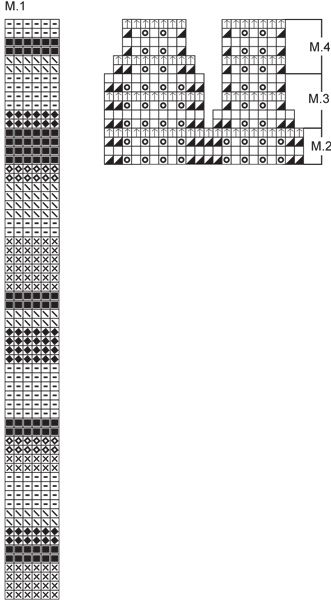 |
|||||||||||||||||||||||||||||||
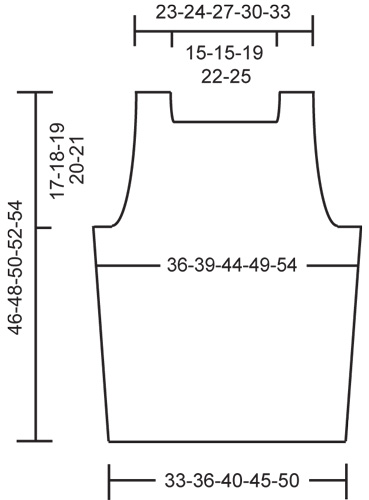 |
|||||||||||||||||||||||||||||||
Have you finished this pattern?Tag your pictures with #dropspattern or submit them to the #dropsfan gallery. Do you need help with this pattern?You'll find 13 tutorial videos, a Comments/Questions area and more by visiting the pattern on garnstudio.com. © 1982-2025 DROPS Design A/S. We reserve all rights. This document, including all its sub-sections, has copyrights. Read more about what you can do with our patterns at the bottom of each pattern on our site. |
|||||||||||||||||||||||||||||||












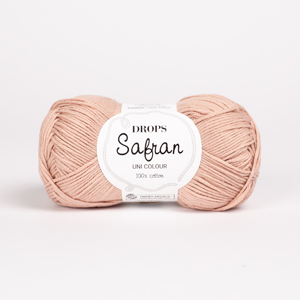







































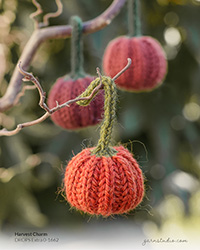




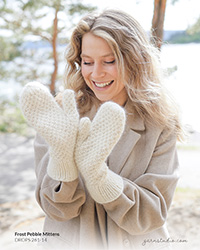
Post a comment to pattern DROPS 81-9
We would love to hear what you have to say about this pattern!
If you want to leave a question, please make sure you select the correct category in the form below, to speed up the answering process. Required fields are marked *.